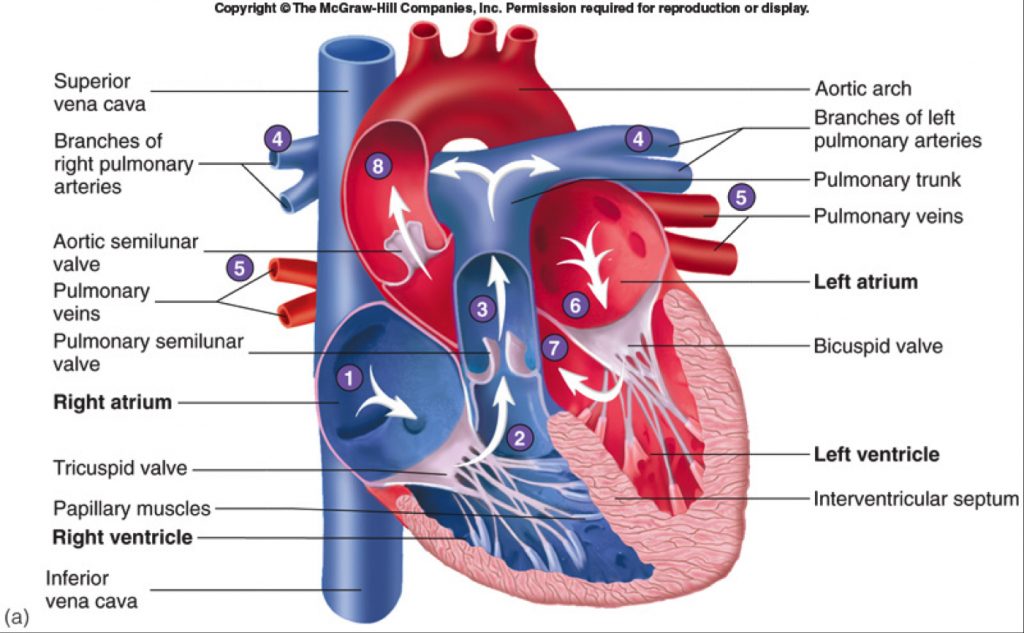Key terms
| Term | Meaning |
|---|---|
| Circulatory system | The body system responsible for carrying blood, nutrients, and waste throughout the body |
| Cardiac | Related to the heart |
| Pulmonary | Related to the lungs |
| Artery | Blood vessel that moves blood away from the heart |
| Vein | Blood vessel that moves blood toward the heart |
| Aorta | Major artery that carries blood to the systemic circulatory system |
| Capillary | Small blood vessel that allows nutrient exchange |
| Atrium | Upper chamber of the heart |
| Ventricle | Lower chamber of the heart |

Heart:-
- Heart is a thick,muscular,contractile automatic pumping organ of blood vascular system.
- A fish has only two chambered heart (Singliciranit).
- In amphibians and most of the reptiles (except crocodilia) heart is three chambered (incomplete Circuit).
- In crocodilia birds and mammals the heart is divided into four chambers (Double Circuit).
- Single circuit means blood flows only once though heart while double circuit means blood flows twice through heart as shown above in human heart. A New Born Baby's heart weight about 20 g.
- The chambers which receive the blood from body tissues are called auricles and the chambers of heart which pump blood to body tissues are called ventricles.


- Human heart beat is myogenic in ature, i.e, initiated by a patch of modified heart muscles it self without requiring an external stimulation. This patch is called SA Node (Sino-Auricular Node) or Pacemaker.
- When SA Node becomes defective i.e. it does not generate cardiac impules,it can be cured by surgical grafting of an artificial pacemaker (An electic device) in the chest of the patient. It stimulate the heart electrically at regular intervals.
- The normal rate of heart beat at rest is about 70-72 per minute. In a newly born baby heart beat rate is about 140 per minute.
- During heavy exercises it may be high as 170-200 per minute. Heart is the only organ which can function for some time outside our body.
Diseases of Heart:-
- Bradycardia:- Decreased heart rate.
- Tachycardia:- Increased heart rate.
- Heart Attack:- Breathlessness,Palpitations,Pain in the chest,Unconsciousness appear suddenly (Nitroglycerine is used for the treatment).
- Coronary thrombosis:- Formation of clot in coronary artery.
Blood Vessels:-
Blood Vessels are of three types
Arteries:-
- These carry the blood away from the heart to various body parts.
- Usually these carry oxygenated (Pure) blood in them except the pulmonary artery which carries deoxygenated blood to the lungs.
Veins:-
- These carry the blood towards heart and away from body parts.
- Usually these carry deoxygenated (Impure) blood in them except the pulmonary vein which carries oxygenated blood to the heart.
Capillaries:-
- These are the thinnest blood vessels which connect arteries to the veins.
- These help in exchange of materials like the nutrients,gases,waste products etc between blood and cells.
Blood:-
- Blood is fluid connective tissue and composed of blood corpuscles.plasma and platelets.
- It is slightly alkaline in nature (pH 7.4).
- It is volume in an adult in 5.8L.
- Blood contains RBC,WBC and platelets.




0 टिप्पणियाँ